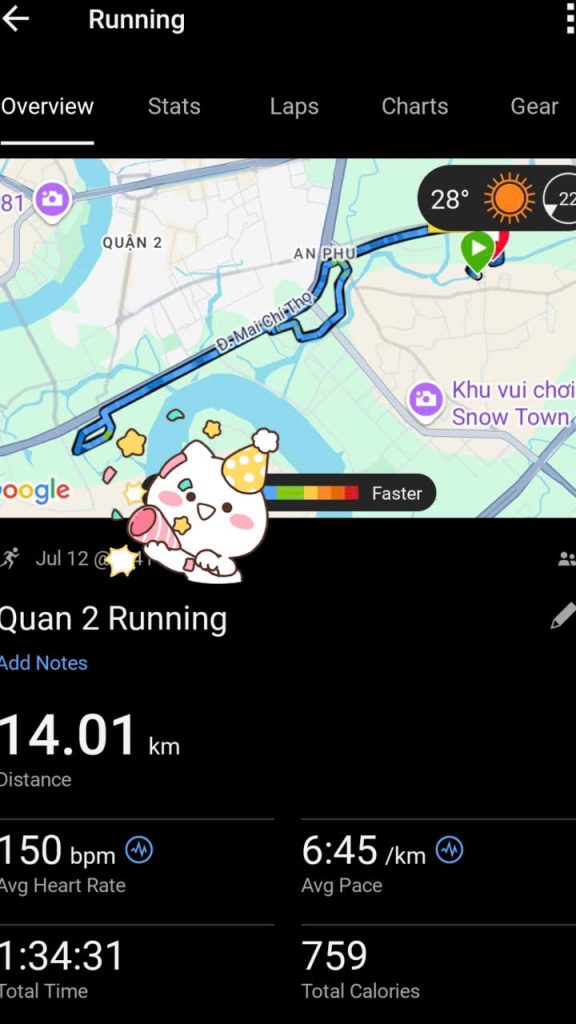Not Every Day is a Peak Day
There’s a quiet kind of strength that comes not from breaking records or crossing finish lines—but from simply showing up when everything inside you wants to hide.
As an endurance athlete and someone who trains daily, I’ve learned that not every day feels good. Not every run is powerful. Not every swim feels smooth. And that’s okay.
This is a story and gentle reminder for anyone who finds it hard to get out of bed, put on their shoes, and show up for themselves when their heart feels heavy or their energy low. It’s about the kind of training that honors where you are, while still nudging you forward—with kindness.
1. Acknowledging the Low Days
There’s a strange kind of guilt that sometimes creeps in when I feel low.
“I should be grateful.”
“I have goals—why can’t I just push through?”
“Other people have it harder.”
But the truth is: low days are part of being human. Whether it’s emotional stress, poor sleep, a cold coming on, or a tough week at work, we all experience dips. The first step in training on low days is acknowledging that we’re not at 100%—and that we don’t need to be.
This acknowledgment doesn’t mean giving up. It just means we meet ourselves with honesty.

2. Redefining What “Training” Means
There was a time I believed that “real training” only counted if I hit a certain pace, distance, or heart rate zone. But I’ve come to see things differently.
On low days, training might look like:
-
A 20-minute walk instead of a 10km run
-
Yoga and breathwork instead of weights
-
A light spin on the bike instead of hill intervals
-
Stretching while listening to calming music
And that counts.
Training, at its core, is about consistency, resilience, and self-respect. It’s not always about performance. Sometimes, it’s simply about staying in the rhythm, however gently.
3. Listening to the Body (and the Mind)
There’s a fine line between pushing through and honoring your limits. On low days, I tune in more closely.
-
If my heart feels heavy, I check in emotionally. Is this sadness, stress, or burnout?
-
If my body aches in unusual ways, I might need more sleep or hydration.
-
If I feel mentally scattered, maybe a short grounding practice will serve me better than another HIIT workout.
One powerful question I ask myself is:
“What kind of movement would nourish me right now?”
Sometimes the answer is sweat. Sometimes it’s stillness.
4. The Power of Ritual Over Motivation
Motivation is unreliable. It comes and goes with mood, weather, hormones, and inbox stress. What keeps me grounded is ritual.
I train not because I feel like it every day, but because it’s part of who I am.
Here’s what helps:
-
Morning routine: I lay out my clothes the night before. I don’t decide in the morning—I just get dressed and move.
-
Playlist power: I have a go-to playlist that lifts me, whether I’m on the road or in the gym.
-
Micro goals: If I don’t feel like training, I commit to just 10 minutes. More often than not, I keep going.
Creating rituals that reduce friction makes it easier to show up—especially when you don’t feel like it.
5. Shifting From Performance to Presence
One of the biggest mindset shifts I’ve made in my athletic journey is moving from performance to presence.
On good days, I track pace, splits, and zones. On low days, I focus on how the air feels on my skin. The rhythm of my breath. The quiet satisfaction of forward motion.
This shift isn’t just helpful—it’s healing.
Presence brings us into the moment. It calms the nervous system. It reminds us that even if we’re not at peak form, we are still alive, still moving, still here.

6. Training Through Emotions
I’ve cried mid-run. I’ve shouted in frustration during swims. I’ve pedaled through grief.
Movement doesn’t erase emotion, but it moves emotion.
When I’m overwhelmed, training becomes a safe container to process what I can’t put into words. Sometimes I start low and finish strong. Sometimes I finish just as low—but with a little more clarity, a little less tension.
Let your training hold space for your emotions. It doesn’t have to be pretty. It just needs to be real.
7. The Support of Community (Even When Silent)
There’s something about knowing that I’m not alone—that others are showing up, in their own cities, on their own roads and tracks—that gives me strength.
I might not train in groups often, but I’m part of a community of people who move through highs and lows, who keep showing up.
On tough days, I think of them—friends, strangers, fellow athletes—and I remember that I’m not the only one whispering, “Just get through today.”
8. Compassion as a Training Tool
Athletes talk a lot about grit and willpower. But on low days, compassion is the strongest training tool I know.
Self-compassion sounds like:
-
“It’s okay to feel tired.”
-
“You’re doing your best.”
-
“Showing up today is a win.”
When I approach my training with softness instead of shame, I find it easier to stay consistent—and to enjoy the process.
Compassion also helps me bounce back quicker. Instead of spiraling into self-blame, I accept where I am, make adjustments, and keep going.
9. Tracking the Long Game
One low day won’t ruin your progress. Nor will one missed session.
What matters most is the long game.
Training when I feel low helps me stay on track—not because it’s the “perfect” session, but because it keeps me in motion. It reminds my brain and body that this is who I am. That I’m not just a fair-weather athlete. That I show up when it’s hard.
Over time, this kind of resilience builds not just fitness—but character.
10. What I Tell Myself on Low Days
Here are some mantras that help me through when I feel low:
-
“Just move.”
-
“This counts.”
-
“One step at a time.”
-
“Energy flows where attention goes.”
-
“You’re stronger than you think.”
Sometimes I write these on a post-it note. Sometimes I say them under my breath. Sometimes I share them on my Sunny Valley platforms in case someone else needs to hear it, too.
11. When Rest Is the Bravest Choice
Let’s be clear: rest is part of training.
There are days when the best thing I can do for my body and mind is to not train—to sleep in, read, cry, call a friend, or simply be.
Knowing when to push and when to pause is a skill that takes time to develop. But I’ve learned that sometimes, choosing rest is not weakness. It’s wisdom.
It means I trust my body. It means I value recovery. It means I’m in this for the long haul.
12. Ending With Grace, Not Guilt
However the session goes—whether I complete a long ride or just manage a walk—I end with grace.
I take a breath. I stretch. I thank my body. I thank myself for showing up.
I don’t tally my worth by my pace. I don’t measure my value in minutes or miles.
I simply say: “You did it. You showed up. And that’s enough.”
A Gentle Reminder to Keep Going
Training when you feel low isn’t about crushing it—it’s about connection. It’s about moving with, not against, yourself. It’s about remembering that forward is forward, no matter the pace.
So the next time you’re feeling off, low, or heavy, here’s a gentle reminder:
You don’t have to be perfect. You just have to begin.
And that, in itself, is a quiet victory.


